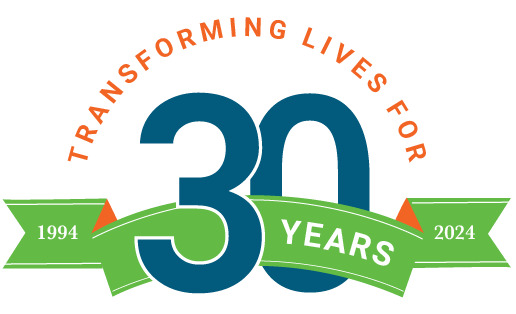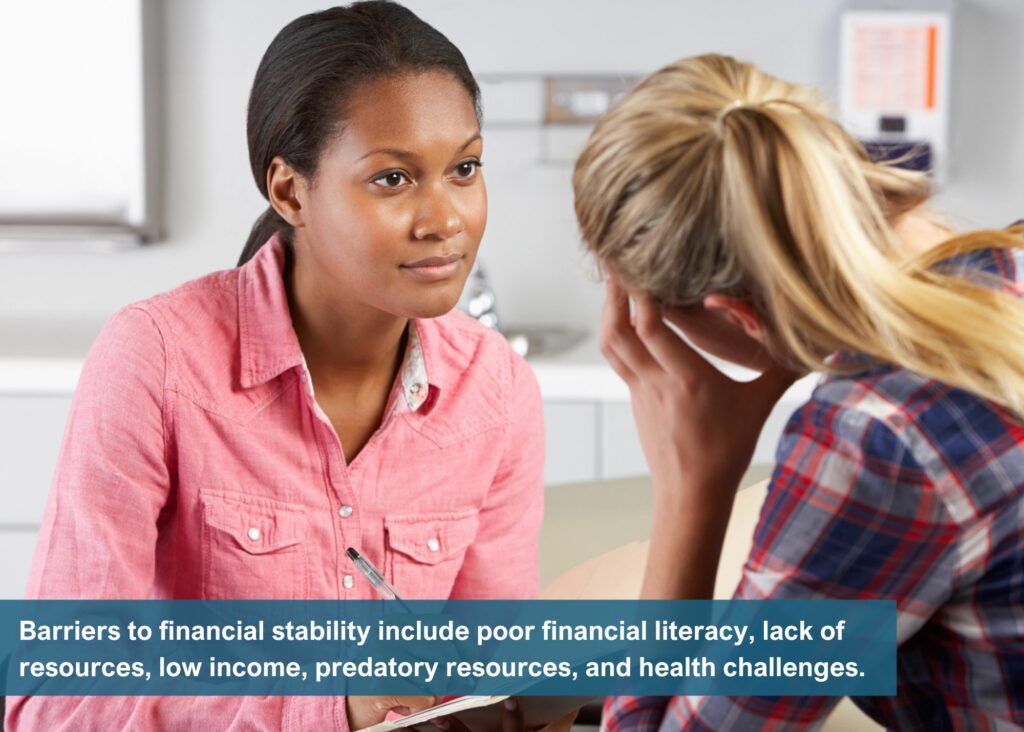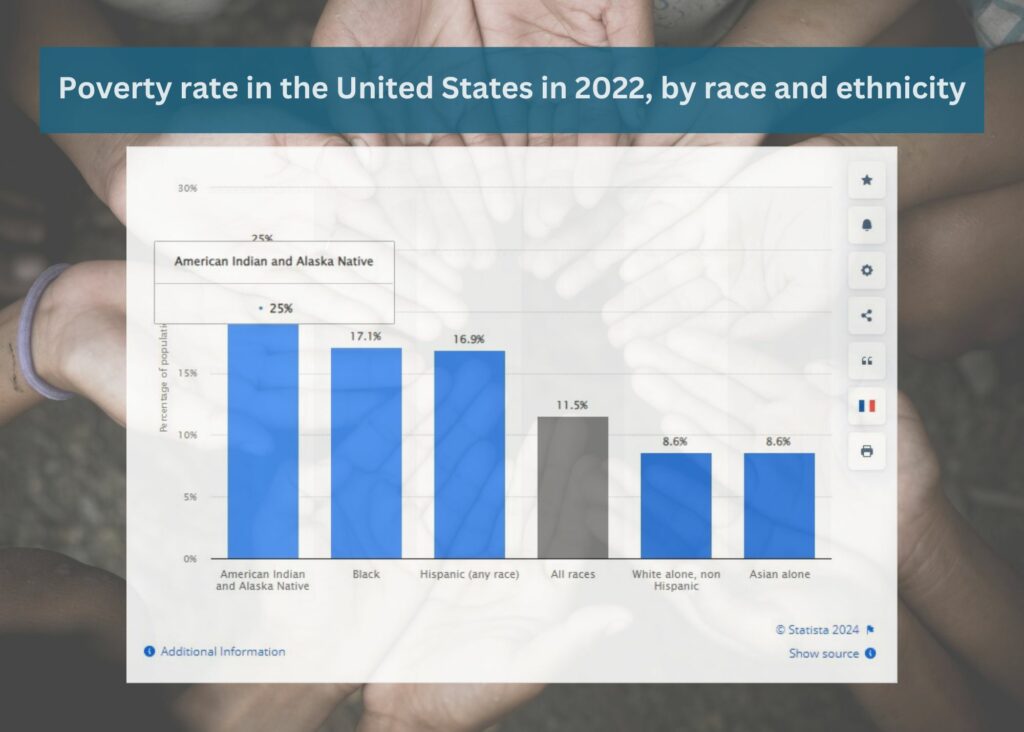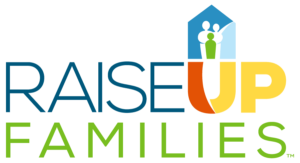

Are you routinely stressed about finances? Have you ever skipped meals or decided not to pursue medical care because you simply didn’t have the funds? Are you scraping by, living paycheck to paycheck?
If so, you aren’t alone.
Hundreds of thousands of Americans are trapped in the cycle of generational poverty.
The good news is this: there is hope.
Whether poverty is a personal struggle or you want to learn more about disadvantaged communities, this blog is for you. Today at RaiseUp Families, we’re addressing generational poverty, discussing its effects, and offering ways to break free from the cycle.
There are many barriers to achieving financial stability. These include,
A key factor of financial insecurity in families is the lack of financial literacy. Despite being the wealthiest nation in the world, the U.S. has alarmingly low financial literacy rates. According to the Milken Institute, the average financial literacy rate in the United States is a mere 57% (2022 data).
It’s difficult for people from vulnerable communities to access community and educational resources like financial literacy classes, job opportunities, mental health services, quality housing, and public transportation.
Many people struggle because they hold low-paying jobs. When faced with an unexpected expense, families may be unable to afford necessities like rent, food, or clothing.

Predatory resources like payday loans create cycles of dependence rather than financial empowerment.
Mental or physical health challenges also lead to poverty and financial insecurity. They may cause people to spend to soothe distraught feelings and prevent someone from holding a job.
(To read about these issues in more detail and learn about ways to overcome them, please read our blog, “7 Contributing Factors to Financial Insecurity in Families (Plus 8 Ways to Find Resources).”)
While these barriers are distinct, something also connects them all.
The OG of financial struggle: generational poverty.
Generational poverty (also called intergenerational poverty) is when families have experienced economic hardship for two generations or more. Poverty is defined differently depending on a country’s minimum wage and other economic factors of a region. Let’s take a look at a few quick facts for the U.S.
According to the U.S. Federal Poverty Guidelines for 2024, individuals making less than $15,060 a year are considered below the poverty line. For a family of four, the number rises to $31,200.

But there’s much more to the vicious cycle of poverty than income.
The most devastating aspect of generational poverty is how hard it is to break the cycle. The narrative of the American Dream says that if you just work hard enough, anyone can climb the economic ladder. However, reality is much more complicated.
Generational poverty is a multifaceted issue. Here are some of the factors at play.
Generational poverty is an excellent example of how history influences the present. For some communities, it may be a history of enslavement and racism, while other communities may have been affected by jobs moving overseas and factories closing. There is also the issue of redlining. Redlining is denying or limiting financial services, such as loans or insurance, to individuals of specific neighborhoods based on their race or ethnicity. Though outlawed in 1968, it contributed to long-lasting disparities in wealth, education, and overall well-being among various racial and ethnic minorities.
Systemic issues in the United States contribute significantly to generational poverty. Some of these include:
These and other factors create barriers that hinder upward mobility.
A lack of resources and social capital exacerbates generational poverty. Limited access to quality education, job opportunities, and essential services helps perpetuate continued economic disadvantage. Impoverished areas often lack the infrastructure and resources necessary for community development. Additionally, the absence of social networks and support systems restricts individuals from accessing crucial information, mentorship, and opportunities for advancement. For example, if no one in a family has been to college, they won’t be able to assist a child with applications or finding scholarships. This combination of limited resources and social capital creates an environment where upward mobility is incredibly difficult.
If someone does break out of generational poverty, it can make their relationships complicated. Those who go to college or “make it” and move to a different community can end up feeling like outsiders in their community of origin. Tensions can arise between those who have “made it out” and those who continue to struggle with poverty. This can hinder those who’ve broken out of the cycle from assisting others to do the same.
Generational poverty is a complex subject, but there is hope. Let’s talk about how to break the cycle.
It takes 3-7 years to break the cycle of generational poverty. Though it takes hard work and commitment, it is possible. Here’s how.
A lot of the issues causing generational poverty are outside of your control, but not all of them. Look for aspects of your financial situation that you can control, and don’t be afraid to assert yourself in seeking help. See yourself as capable of overcoming challenges. Make goals and commit to gradual daily progress.

Develop financial awareness by distinguishing between needs and wants and understanding that excess wants can lead to financial hardship. Additionally, recognize and address learned spending behaviors influenced by generational poverty. These can hugely impact financial growth and stability.
Education is vital to overcoming poverty. This can feel challenging, especially if you’ve been out of school for some time. However, there are educational resources available. A great way to find resources is to go to findhelp.org and input your zip code. Select “Education” to see what is available near you. If you have kids, you can invest in their education by supporting them in completing high school and connecting them with resources to help them decide if they want to attend college.
Education doesn’t entail financial literacy. However, it’s crucial for upward mobility since it empowers individuals to navigate economic challenges effectively. Understanding budgeting, investing, and debt management fosters financial independence. Informed decision-making regarding savings and investments can lead to wealth accumulation and long-term stability. Financial literacy also facilitates career planning, encouraging individuals to seek higher income and professional growth opportunities.
Sometimes, the best way to assert yourself is to ask for help. Breaking out of the cycle of generational poverty is hard and shouldn’t need to be done alone. Here are a few ways to access local resources.
The following are helpful resources if you’re from the Houston area.
At RaiseUp Families, we’re here to help families with school-aged children break the cycle of generational poverty. Our goal is to empower families through providing support and education that will enable them to engage confidently in life’s financial decisions. We offer two overarching programs: the HandUp Program (step 1) and the AfterCare Program (step 2).
Here are some specific elements of these programs that build knowledge and resources to increase confidence.
Note: This is a non-clinical service. Severe or clinically significant issues are referred to a licensed clinical counselor or a doctor’s care.
We hope you found this blog helpful! Generational poverty can be overcome, and we’d love to support you on that journey. Don’t hesitate to reach out if you have any questions.
Here’s to a brighter future!
